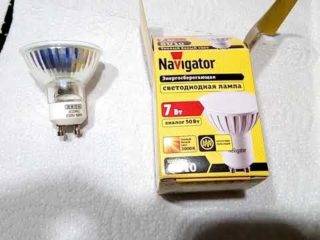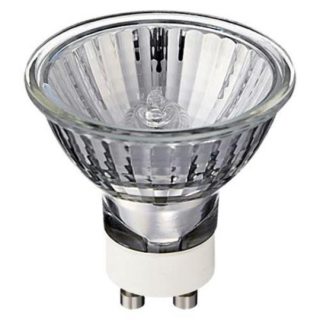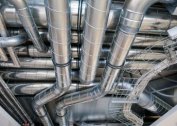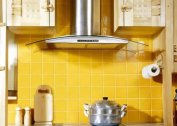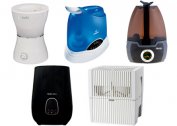Highlighting the hood with bulbs is an additional option available on almost all models. They differ in the type of lighting elements used, their brightness and location. Regardless of these factors, it is important to understand how to replace the light bulb in the hood in the kitchen in case of burnout.
Selection of bulbs for hoods
In modern exhaust devices, the following types of lamps are installed:
- luminescent;
- economical LED;
- halogen and conventional incandescent bulbs.
An extractor fluorescent light bulb in the kitchen allows you to get a cool and soft light, which guarantees good illumination of the kitchen equipment. They are designed for long operating periods of at least 5 years, and are characterized by a relatively high price. Fluorescent lamps are installed in hoods of the “Krona” type, Faber Titano, as well as in Miele DA models.
LED devices are characterized by high efficiency and are installed in modern models of exhaust devices. Presumably, the savings due to their application reaches 90%, and the service life is at least 10 years. LED lamps are mounted in hood models such as Shindo Nori, Hansa OKC, Gorenje BHP, Maunfeld and others.
Halogen bulbs are a relatively expensive option for luminaires that have a long service life. They are achieved by adding halogen vapor to the cylinder, increasing the working life up to 2-4 thousand hours, and the temperature of the spiral - up to about 300 degrees. Halogen illuminators consume less energy than conventional lamps, and allow you to get a natural glow. These products compete with LED analogs and are installed in Elikor hoods, for example.
Incandescent lamps are positioned as the easiest lighting option that can be found in most budget models. The light beam in these products is obtained by passing current through a tungsten filament. This light source is characterized by a soft glow, creating a feeling of comfort. As a rule, samples with a capacity of 20 or 40 watts with a base marked E14 are installed in the hoods. The disadvantage of cheap bulbs is that they quickly burn out.
Advantages and disadvantages
Advantages of using backlight:
- ease of use of the stove, illuminated from above;
- the possibility of long-term operation of economical products that do not blind the eyes of the hostess;
- naturalness of lighting.
The advantages of the backlight do not exclude the presence of its negative aspects: the high cost of some types of illuminators and the additional cost of paying for electricity.
Breakdown reasons
The main reasons for the failure of the lamps include:
- expiration of service life;
- breaker breaker;
- problems in wiring;
- contamination and moisture ingress;
- a short circuit in the power circuit or an open in the connecting contacts.
Each of these cases requires a special approach that will help eliminate the malfunction. Sometimes this can be done independently, but in most situations it will require the intervention of a professional electrician.
Replacement of the bulb in the hood depending on the design
The procedure for replacing the bulbs in the hood depends on the type of illuminator used.For a conventional incandescent lamp, it looks like this:
- The device is disconnected from the power supply - the plug is pulled out of the socket.
- A pause is required to cool the light bulb, after which the grease trap filter is removed.
- The burned-out lamp is twisted counterclockwise by rotation, and a new product of the same power is screwed into its place.
At the final stage of work, the filter returns. To test the new illuminator, a trial inclusion is made.
For halogen bulbs, the replacement sequence is as follows:
- The hood is de-energized, after which time is given for cooling the surface of the lamp.
- The luminaire cover is removed by a flat screwdriver.
- The halogen appliance changes to a similar sample. When replacing it, the lamp housing must not be taken with bare hands. A clean cloth is used to prevent the formation of traces of dust on the glass, leading to rapid burnout.
- The lid of the illuminator is installed in place.
LED products are replaced in the same order. The only subtlety is the presence in some models of a locking button, which should be pressed when removing the old bulb.
Luminescent and halogen products that have burnt down or have expired should be disposed of because they contain gas that is hazardous to humans in the flask. LEDs do not contain harmful components and are most often disassembled into spare parts.
Features of replacing bulbs in hoods from different manufacturers
To change the bulbs in the cooker hoods from different manufacturers, you should carefully familiarize yourself with the features of their design. Several popular companies are known, products from which are most often purchased by a Russian user.
Cooker hoods
The products of this company use candle-shaped minion incandescent lamps (E14 base) with a capacity of 25 watts. Using products with other parameters is prohibited. To access them, you need to remove the grease filter. Closer to the rear wall are visible cartridges into which one or two lamps are screwed (depending on the model). To replace a blown bulb, you will need to unscrew it, and then screw a new sample into this place. At the end of the operation, the aluminum filter is replaced.
Maunfeld Devices
When replacing the lamps in the “Mountainfield” hoods, two types of models should be distinguished. In one of them, after disconnecting from the mains, the bulb is simply removed from the cartridge and replaced with a new one. In products from the Great lineup, you first need to pry the ring holding the lamp housing with a flat screwdriver, and then carefully pull it out. After that, it remains to replace the lighting element and install the ring in place.
Devices from Lex and “Elikor”
Lex devices use halogen bulbs that are markedly different from other lighting products. When replacing them, the most important thing is not to touch the working surfaces of the lighting elements with your hands, since after that they quickly fail. The same procedure applies to hoods of the “Elikor” brand, in which halogen products are also installed.


